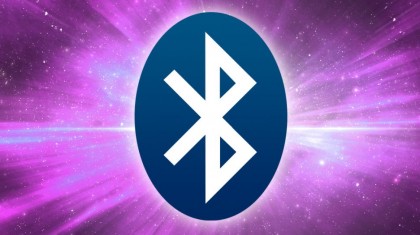Why the Lightning port beats Bluetooth for sound quality
When Apple drops the headphone jack, don't go wireless

Every September when Apple unveils a new iPhone, the big tech story the next day is about some new feature the company has added.
This time around though the huge talking point looks certain to be that Apple is taking something away with the iPhone 7: the 3.5mm headphone socket.
Yes, after decades of service the 3.5mm jack - which has been a common feature on portable tech dating back to the days when the original Sony Walkman made it popular - could be old news.
Instead, if you want to listen to tunes on your new iPhone, you'll have to use either buds designed for Apple's Lightning connector or a pair of wirelessly connected bluetooth headphones.

Apple won't be the first phone manufacturer to cull the ancient standard - the Moto Z, which was announced earlier this year, has done the same - but when Apple unleashes a feature like this, it's going to impact far more people.
Apple is one of very few manufacturers that can change a feature like this and assume that it's customers will continue to buy the devices despite something so potentially divisive.
With the iPhone 7 the removal of the jack would mean even more millimeters shaved off of the next iPhone - or that by utilising the space saved by not having a plug, Apple could make the battery slightly bigger.
Get daily insight, inspiration and deals in your inbox
Sign up for breaking news, reviews, opinion, top tech deals, and more.
- The iPhone 7 headphone jack saga: the story so far
But what will it mean for you, the phone-buying public? Though there are suggestions that Apple will release a 3.5mm-to-Lightning adapter (or even put it in the box), it does seem increasingly likely that when you next buy headphones, you might have to make a big decision about which kind of technology you back: Lightning or Bluetooth.
So here's the key question: which is better?
Data Transfer Speeds
With Lightning or Bluetooth, the audio signal is transferred to our headphones digitally - meaning that the signal isn't degraded like it is with a traditional 3.5mm jack.
Instead, the audio signals are decoded by the digital-analogue converter (DAC) in our headphones, pulling the bits apart and making them into the smooth analogue sound we know.
Perhaps the simplest way to compare the two is in terms of how much data they can transfer: the more data they can shift between your phone and your headphone's DAC, the better quality audio can be. More data means more bits of sound to play with and reassemble - and on this measure, there's only one winner.
Simply put, Lightning cables are capable of transferring much more data than Bluetooth, which means higher fidelity audio in your ears.

Dr Kevin Curran, senior member of the Institute of Electrical and Electronics Engineers and reader of Computer Science at Ulster University puts it in megabit terms - pointing out that even the latest version of Bluetooth (4.2) can only transfer at a maximum of 25Mbps - that's around 3.25 megabytes per second.
The Lightning port in current iPhones meanwhile works at USB 2.0 speeds - that's around 480Mbps - or around 60 megabytes per second.
If, as rumoured, the iPhone 7 Lightning port is brought up to match USB 3.0's data output that could mean a theoretical transfer rate of 5Gbps - or around 640 megabytes per second. This would be a huge gulf between the two technologies.
"Quite simply, using the Lightning port offers superior audio listening", Dr Curran argues.
There is also a differentiation between the two standards in terms of how they handle audio, and this is where the difference in speed becomes apparent.
To send sound, Bluetooth uses the "A2DP" profile, which has one major flaw: it's a 'lossy' format. It's the same principles as used by, say, JPEG photos or MP3 tracks where algorithms strip out or simplify some data, to create smaller file sizes.